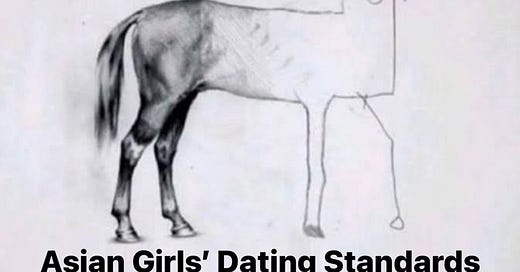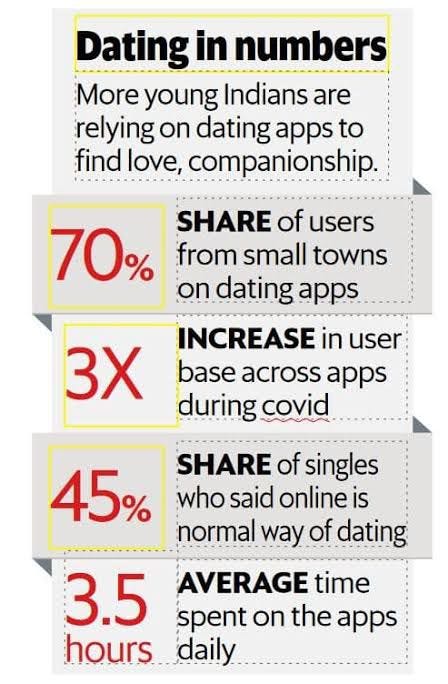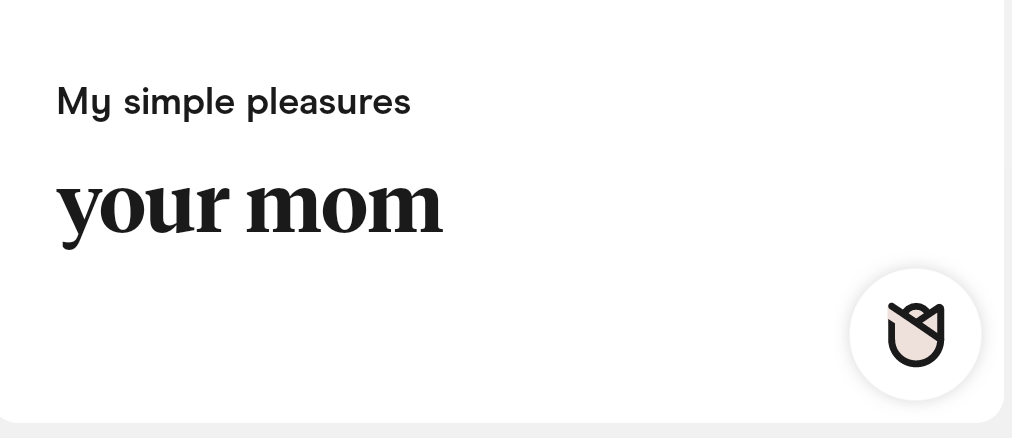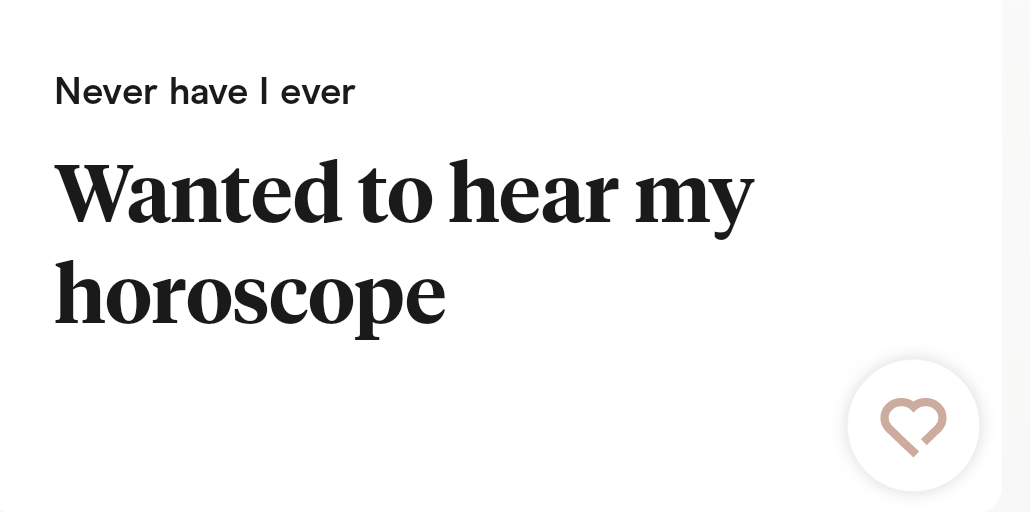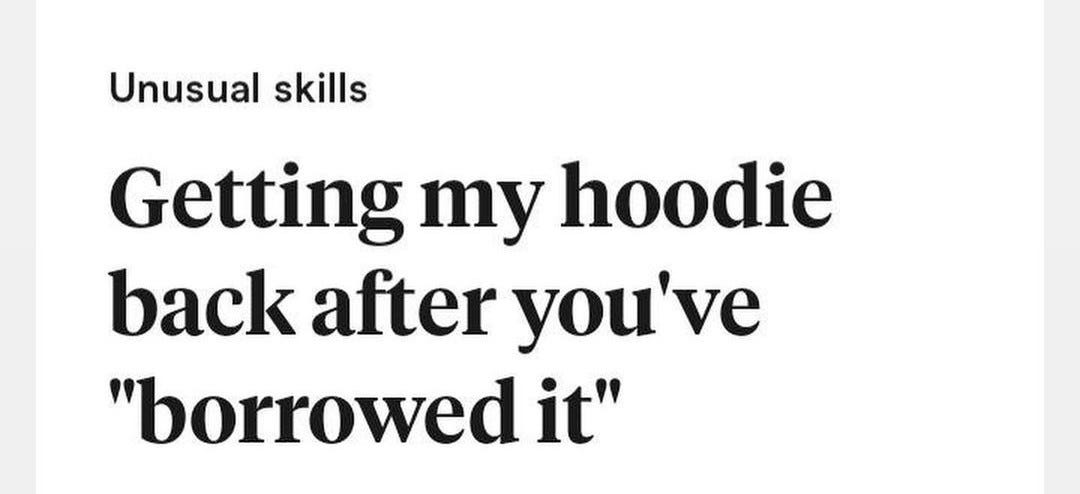The coolness fling economy: The evolution of dating apps and GenZ love quest
Welcome to the wild, wild west of modern romance, where love is just a swipe away— if you're willing to pay for it.
Dating apps like Hinge, Bumble, and Tinder have turned the quest for love into a series of in-app purchases. Remember when finding a date didn't require a subscription plan? Ah, the good old days.
The Freemium Love Affair
Dating apps once promised free matches and endless swipes, offering a digital flirtation paradise. Now, they resemble upscale nightclubs— entry is free, but VIP access comes at a price.
Want to send a super-like to show you’re really interested? You’ll need to pay. And if you’re aiming to stand out, you can buy a boost. Plus, super likes are available for those who want to make an extra impact.
It's basically like peacocking, but with your credit card.
Pay For Your Preference
Hinge requires you to pay for every minimal feature: sending a super-like (Rose), filtering by height, city, with only 5-6 likes per day. Seriously, a single rose costs over 120 rupees at best! Might as well get them roses from the flower shop.
Bumble has this UI where only women are allowed to text first, and if men want to, they start with a compliment and that costs at least 35 bucks a piece, that too when you buy 15 of them together. Seems more reasonable than Hinge but how does it matter? Every dating app charges you after a certain point. Makes you wonder whether having better plans for your money is a crime to the dating world.
Love, but in limits. Typical Indian mom.
Gen Z and the Superficial Swipe
For Gen Z, the dating scene has morphed into a fast-paced, superficial experience. Swipe right for yes, left for no— it's like speed dating on steroids.
The quick judgment based on photos and bios has turned the dating pool into a sea of surface-level interactions.
The Insta-Factor: Gen Z is growing up in the age of Instagram perfection. Filters, curated profiles, and highlight reels dominate their social lives. This spills over into dating, where a perfect picture often outweighs a meaningful connection. It's pretty much as if you're judging a book by its cover— except in this case, the cover has been Photoshopped and filtered.
The Paradox of Choice: With so many options at their fingertips, Gen Z faces the paradox of choice. More options should mean better chances, but it seems more like standing in front of a buffet with too many dishes— overwhelming and paralyzing. And the result is a cycle of endless swiping, ghosting, and shallow connections.
According to one of our writers Shyam Arvadia, nowhere is this paradox more visible than in the dating preferences of Asian girls (Indians, Chinese, both inclusive) in the U.S. and even the EU. Here's the thing: there's an observable trend where Asian girls might prefer to date white guys who may not necessarily be good-looking or have a great personality—at least not relative to their Asian counterparts. But the fact that they are white often gives them a 'yes' where others would get a 'no.'
On the flip side, when it comes to dating within their own community, the standards suddenly shoot through the roof. The discrepancy is so stark that it could be illustrated by this image below:
There is a massive wave, a wet and salty one, where people are beyond fed up with situation-ships, swiping left and right only to either end up with superficial conversations or they end up getting ghosted.
There might be different players in the game, but it always ends the same. Who normalized ghosting is an entirely different question, but for now, let’s get into a little detail.
How Does Your Brain Work while Online Dating?
You're not alone if you've ever found yourself puzzled by the seemingly illogical ways you respond to dating app matches.
According to Dr. David Greenfield, founder and medical director of the Center for Internet and Technology Addiction, and an assistant clinical professor of psychiatry at the University of Connecticut School of Medicine, these reactions are deeply rooted in the brain's primitive structures. “When you use dating apps, you're engaging with fundamental neurological circuits that aren't necessarily rational,” Dr. Greenfield explains. This is why people can spend hours swiping—it's less about a conscious desire for a relationship and more about how these apps engage the brain's reward systems, turning the process into something akin to a sport that keeps us coming back.
The Role of Dopamine
When you receive a notification that someone has swiped right on you or sent a message, your brain's reward system kicks into gear. This system involves a network of brain regions linked by dopamine pathways, where the neurotransmitter dopamine creates feelings of reward and pleasure. A match on a dating app triggers a dopamine “spike,” which translates into a sense of happiness. Interestingly, these dopamine surges occur in two stages.
“Dating apps are like giant slot machines,” Dr. Greenfield says. “First, there's the anticipation that something exciting might happen, which alone can double your dopamine levels. Then, when you finally check your app and see a match or a message from someone you’re interested in, you get another dopamine hit.” This sequence can create a powerful, rewarding sensation that keeps users engaged.
The Primitive Brain at Work
The areas of the brain activated by these dopamine hits are ancient and have been part of the human brain for millions of years. “When you use dating apps, you're tapping into very old neurobiological circuits,” Dr. Greenfield notes. These circuits, located in the brain's limbic system, originally evolved to ensure survival through activities like finding food and securing a mate. Today, these same circuits light up when you receive a notification on a dating app, similar to how they would respond to essential survival cues.
For example, studies have shown that the nucleus accumbens, a key part of the brain's reward system, is activated when we see attractive faces. This reaction is a remnant of our evolutionary past, where recognizing potential mates was crucial for survival.
The Loop
The design of dating apps also plays a role in how our brains react. Nathalie Nahai, author of Webs of Influence and an expert in online behaviour psychology, points out that dating apps utilise an “unpredictable reward” system, where users are never sure when or if they’ll receive a match. “This kind of variable reinforcement leads to what’s known as a dopamine loop,” Nahai explains. “Users keep seeking out those rewards to get that rush of excitement again.”
Dr. Greenfield agrees, adding that the unpredictability of matches keeps people engaged. “The uncertainty of what you'll find keeps users coming back, even if they’ve had negative experiences in the past,” he says. This intermittent reinforcement—small successes here and there—fuels continuous use, even after disappointing outcomes like ghosting or failed dates.
Snap Judgments and Rapid Evaluations
Once a match is made, your brain shifts into judgment mode. A study published in the *Journal of Neuroscience* in 2012 found that when people look at photos of potential dates, the dorsomedial prefrontal cortex—an area of the brain involved in decision-making and emotional regulation—becomes highly active. This brain region helps us assess both physical attractiveness and perceived personality traits based on the limited information available in a profile picture.
The Limited Role of the Opioid System
Interestingly, what doesn't happen in the brain during dating app use is just as telling as what does. The complementary opioid system, another part of the brain's reward network, typically generates feelings of deep satisfaction, but it doesn’t seem to be significantly engaged by dating apps.
“While validation from likes or matches gives a small sense of satisfaction, it doesn't quite reach the level of fulfillment that the opioid system would provide,” Nahai says. This is why dating apps often leave users feeling like something is missing, despite the short-term dopamine hits.
In conclusion, if you find yourself irresistibly drawn to dating apps, it's not just your imagination. These platforms are designed to stimulate specific parts of our brains that trigger powerful feelings of reward, without providing long-lasting satisfaction—unless, of course, you eventually find true love and delete the app for good.
Indian Youth using Online Dating Apps are on Rapid Growth
With an increase in users of dating apps comes an increase in concern about data privacy and safety. Dating apps are now observed to be integrating advanced security features and users have become perceptive in providing their data.
The increase in users is proof of their blind faith in finding themselves a ‘partner’ with the apps’ assistance and without actually questioning the apps’ privacy measures.
A close study of the given data of Indian youth that use dating apps would provide a better insight :
Indian youngsters are using dating apps at a rate that is far higher than before.
The online dating industry in India is expected to generate $783 million in revenue by 2024, up from $454 million in 2021. Furthermore, it is anticipated that by 2024, the proportion of Indians utilising online dating services will rise from 2.2% to 3.6% of the population.
Currently, 5.8% of Indians utilise online dating services, with young people making up a large share of this demographic.
This increase, particularly in cities like Delhi, Bengaluru, and Mumbai, is indicative of a change in societal norms and a growing comfort level with online dating. In India, the digital dating revolution is being driven by well-known applications like Tinder, Bumble, and Hinge.
Due to the abundance of apps on the market providing comparable services, there is a fierce rivalry and frequently an excessive amount of options for customers.
This can lessen the impact of any one app and add to the belief that dating apps aren't producing the expected results. The most popular apps on the market, Tinder and Bumble in particular, are more often linked to short-term hookups than committed partnerships.
It has also led to a growing sentiment that these apps are more about fleeting interactions than meaningful connections.
In today's world, dating has become increasingly superficial. People find themselves swiping past profiles without a second thought if the first picture doesn't catch their eye.
It's undeniable: perfectly curated profiles with picture-perfect shots get more attention. Conventionally attractive people receive more likes and matches.
It's a harsh and cruel reality, but it's true nonetheless.
Another frustrating aspect of present-day dating is the monotony of it all.
Nearly every profile you come across features the same tired responses to prompts, offering little originality or genuine insight.
It's like scrolling through a never-ending loop of clichés, making it hard to find someone who truly stands out.
Some More Numbers
The Most Popular Dating Apps
In a recent survey by Forbes Health, nearly half of respondents (49%) reported using Tinder within the past year, making it the most popular dating app. Other frequently used apps include Plenty of Fish (38%) and Bumble (29%). The full list of popular dating apps, along with the percentage of users who have engaged with them, is as follows:
- Tinder: 49%
- Plenty of Fish: 38%
- Bumble: 29%
- eharmony: 21%
- OkCupid: 17%
- Hinge: 17%
- Christian Mingle: 15%
- Grindr: 13%
- HER: 10%
- Coffee Meets Bagel: 9%
- Raya: 3%
What are People Looking for on Dating Apps?
With the vast array of potential matches and the often unclear intentions of other users, understanding what people are truly looking for on dating apps can be challenging.
Survey findings reveal that a significant number of users are seeking serious relationships. Almost half of the respondents indicated that their primary goal on dating apps was to find a long-term partner, with Gen Z showing a slightly higher inclination toward this goal at 52%. Comparatively, 49% of millennials, 47% of Generation X, and 47% of baby boomers shared this aim.
However, the desire for casual relationships remains prominent, with 20% of users preferring casual dating with a single partner and 12% seeking casual relationships with multiple partners. Additionally, 10% are interested in “friends with benefits” arrangements, and 9% are looking solely for friendship.
Although the majority seem to prioritise long-term relationships, the intentions of others can sometimes be murky. Judy Ho, Ph.D., a triple board-certified clinical and forensic neuropsychologist, notes that determining another person's true intentions can be difficult, as deception is not uncommon in online dating environments.
Time Spent on Dating Apps
On average, users report spending close to 51 minutes per day on dating apps, with women averaging slightly more time (52 minutes) compared to men (49 minutes).
Those who spend the most time on these platforms might include individuals who are compulsive swipers, those using the apps as a social or emotional distraction, or people seeking an ego boost. Rufus Tony Spann, Ph.D., a certified sex therapist, suggests limiting dating app usage to 30 minutes at a time and taking breaks to avoid potential negative consequences like burnout.
Dr. Spann emphasizes the importance of reflecting on how time is spent on dating apps. Ideally, users should focus on fostering genuine connections or making plans to meet matches in person. If the time spent on these apps is driven by loneliness, boredom, or avoidance of personal issues, it may be necessary to reassess the extent of app usage.
As with many activities, moderation is key. Dr. Ho adds that if dating apps start interfering with other meaningful aspects of life, or if thoughts about the apps become obsessive, it might indicate a problem that needs addressing.
Little White Lies: The Truth Behind Profile Tweaks
It’s no secret that some people reuse the same icebreakers in conversations, but there’s a more significant issue at play when users start altering key characteristics that might attract a match in the first place.
Despite many claiming they’re on dating apps to find long-term relationships, the journey often begins on shaky ground. Approximately 21% of adults surveyed admitted to lying about their age, with men (23%) being slightly more prone to this than women (19%).
The deception doesn’t stop there. About 14% of users confessed to exaggerating their income and interests, while another 13% have been dishonest about their employment status, dating history, or current relationship situation.
Interestingly, only 12% of respondents admitted to lying about their height, with 15% of men and 11% of women doing so—challenging the stereotype that men frequently misrepresent this particular detail.
Dr. Spann explains that such dishonesty often stems from underlying insecurities or societal pressures. He suggests that these lies are often motivated by a desire to impress potential matches, though they rarely hold up over time and can ultimately harm relationships.
Dr. Ho adds that when users invest significant time in swiping and setting up dates, only to discover that the person doesn’t match their profile, it can lead to disillusionment with the dating process. This mismatch may cause individuals to become more guarded and skeptical in future interactions, ultimately eroding trust in the entire experience.
A Silver Lining:
Despite the superficial swipe culture and the pay-to-play model, there are some positive aspects to modern dating apps that we cannot ignore.
Dating apps have made it easier for people to meet others outside their immediate social circles.
Apps like Bumble, where women make the first move, empower users to take control of their dating lives. It’s a step towards balancing the scales in the dating game.
Dating apps bring together people from different backgrounds, cultures, and interests.
A Swipe Towards Future
The world of dating apps is a mixed bag of superficial swipes and pay-to-play features, but it also offers opportunities for connection and empowerment.
For Gen Z, navigating this landscape requires balancing the allure of instant gratification with the desire for deeper connections.
As dating apps continue to evolve, perhaps they'll find a way to blend the best of both worlds— meaningful matches and affordable access.
Until then, happy swiping.
May the odds (and algorithms) be ever in your favor!

